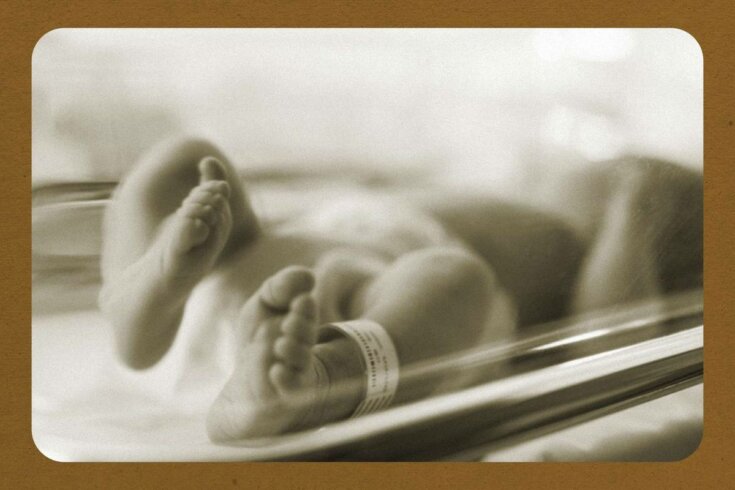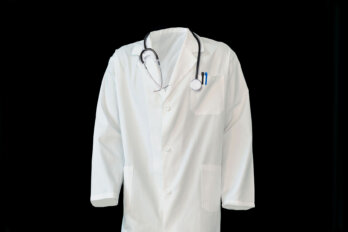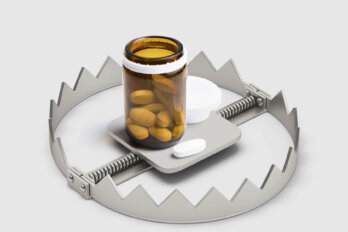In the 1970s, twenty-five-year-old socialist feminist Shulamith Firestone penned her manifesto. “Pregnancy,” she wrote, “is barbaric.” Firestone remarked that as a direct consequence of the dominance of men in scientific research, we could travel to the moon, but we still hadn’t found a better way to gestate humans. In 2018, nearly fifty years after Firestone made these claims, I sat in a crowd of geneticists, embryologists, and humanities scholars working under the broad umbrella of topics in reproduction. The audience watched in dumbfounded silence as bioethicist Anna Smajdor made a new case for Firestone’s forty-year-old argument. The physical consequences of pregnancy and birth ranged from sustained nausea, dizziness, and exhaustion, to trauma, permanent injury, and death. How was it that we hadn’t “fixed” this yet? Nodding to the research of the scientists in attendance, Smajdor made a confident declaration: sexual reproduction was on its way out, and a new era of automated gestation was soon to begin.
Recent developments in neonatology and embryology have brought us to an unprecedented moment. We are five to ten years from the achievement of a partial artificial womb for humans, based on current estimates. Which means that not so far down the road, we will probably be able to sustain a fetus outside a human body for nearly half of its gestation. If, as seems more and more possible, one day, the growth of embryos in a laboratory and the maintenance of infants in a neonatal ward meet in the middle, we will achieve full ectogenesis: external gestation. Babies might be gestated, from conception to birth, without ever being carried in a person’s uterus. While growing a human from the embryonic stage through to full term may sound futuristic—impossible even—it is closer than ever before.
As the audience queued for coffee, they debated Smajdor’s proposal. Some women in the group commented that they had enjoyed being pregnant, that carrying a child had been a profoundly challenging but rewarding experience. Others described relentless morning sickness, hemorrhoids, “feeling like an elephant,” and being treated as public property—suddenly every stranger had an opinion on their bodies and behaviour. In weighing their experiences of pregnancy and birth, the perspectives of each of these women had been shaped by the sense that there was simply no other way. What makes Firestone and Smajdor’s argument so provocative is their invitation to think beyond this assumption, to ask how our attitudes toward pregnancy might change if, in fact, there was another way. Considered in the context of the scientific research of the past several years, Smajdor’s prediction about the end of sexual reproduction is not so hard to imagine after all.
Would we end human pregnancy entirely if we could? Could any person of any gender be responsible for gestating a fetus to term? These debates, after Smajdor’s speech in 2018, reflect how the very idea of an artificial womb forces us to question our most basic assumptions about human life. This is not just about the possibility of a collective existential crisis. The social and ethical questions raised by both partial artificial wombs and ectogenesis have real-world implications.
Considered together, the questions that artificial wombs raise for society—for law, medicine, and ethics—could have a profound impact on what it means to be human. Today it is a fundamental and uncontested truth that someone gestated you. They navigated the physical, emotional, and social ups and downs of being pregnant. They ate and drank and moved, and you reflexively did these things with them. Their heartbeat was your first sound, their uterus was the first place you hiccupped, stretched, and spun. This was your first relationship. This was the first person to mediate between you and everything else. What if, alongside all the other things that I cannot possibly know about you, I did not know whether you were gestated by a person or by a technology?
In 2017, researchers at the Children’s Hospital of Philadelphia (CHoP) released news of successful animal trials of the first partial artificial womb, a platform they dubbed “the biobag.” They had achieved what was previously believed to be impossible: they had re-created the liquid environment of the uterus. Any baby born before thirty-seven weeks is considered premature, with any birth before thirty-two weeks considered very preterm. From twenty-eight weeks, in a well-equipped hospital, an infant has a good chance of survival. While contemporary technologies can be used to assist extremely preterm babies born as early as twenty-two weeks, mortality remains high. The best that can currently be done for these infants is the provision of emergency care to treat the complications of being born before their organs have developed sufficiently to function in the outside world. With an estimated survival rate of just 10 percent for babies born at twenty-two weeks, approximately one-third of those who live suffer significant health issues.
The success of the biobag animal trials raised the possibility that these health complications could be prevented and that a neonate born nearly four months before their due date could recover in good health. An extremely premature lamb fetus was placed inside a translucent polyurethane bag and was buoyed by artificial amniotic fluid. Like the fluids that surround a baby in a pregnant person’s body, this synthetic liquid delivered nutrients to the neonate. After much trial and error, researchers were able to use an external pump that fed oxygen into the biobag and flushed out toxins to create a workable approximation of the placenta, the extraordinary organ that grows in pregnancy to connect the fetus to the uterus. The technology ultimately allowed scientists to successfully gestate lamb fetuses from the equivalent of approximately twenty-two to twenty-four weeks in a human until they were fully developed (at the equivalent of around twenty-eight weeks) and could be extracted in good health. In 2019, the group announced a second round of promising animal trials. The process of securing Food and Drug Administration approval for trials with human fetuses is now under way, with hopes that this work might begin within the next few years.
Meanwhile, as of 2022, a team working between Japan and Australia has completed two animal trials of a similar platform, which they are calling ex-vivo uterine environment therapy, or EVE. Their research has shown promise with animal fetuses at an even lower gestational threshold and birth weight than those in the biobag experiments, with the intention to treat human babies born as early as twenty-one weeks—just shy of halfway through a full-term pregnancy. And in the Netherlands in autumn 2019, a multidisciplinary research team announced plans to create their own partial artificial womb within five years. Using strikingly lifelike 3D-printed model neonates equipped with sensors, and replicating features such as maternal heartbeat sounds, the team plans to create a technology that can not only gestate extremely premature babies but also track the specific needs of a given infant and readjust the conditions accordingly.
These projects are distinct from one another in experimental design. They share the potential, however, to revolutionize what is possible in the care of extremely preterm babies. Existing forms of neonatal care are emergency interventions. The baby is given treatments to stave off the effects of being born with significantly underdeveloped organs. The artificial womb, in contrast, extends the period of gestation to prevent these complications from arising to begin with. If it works, it will enable the infant to keep growing as though it had not yet been born. And with scientists anticipating human trials within the next few years, artificial-womb technology is no longer purely speculative. The “before” and “after” images released by the biobag team were eerie and briefly ubiquitous. In the first, a floating, pink-skinned, wrinkled lamb fetus sleeps adrift in a transparent bag. In the second, it has grown soft white wool and its body presses against the plastic surface, waiting to be born. These pictures evoke much the same reaction that people once felt when they first encountered incubators: the curious sensation of peering into the future.
After announcing their animal trials in 2017, the research team behind the biobag immediately found themselves caught up in a media buzz. You can see the dismay on Emily Partridge’s and Alan Flake’s faces in some of their early interviews—and who can blame them? There they were, ready to explain that their technology, if successful, could drastically improve prospects for extremely premature babies and their parents. Yet interviewers were generally less interested in asking about, for instance, what went into the artificial amniotic fluid they had created and more interested in whether they intended to grow babies from conception. Was this, eager journalists wanted to know, the beginning of “Brave New World”?
Brave New World was shorthand for the kind of bleak future with ectogenesis that we might all hope to avoid—one where infants are generated in jars, guarded against any kind of loving relationship, and destined to become adults who are thoroughly brainwashed subjects of the state. In Aldous Huxley’s novel of that name, artificial wombs are symbolic of the worst aspects of humanity. The CHoP research team has been clear from the beginning that they have no intention of contributing to ectogenesis. “No one,” Partridge commented back in 2017, “is trying to do that.” Describing artificial gestation as “the stuff of science fiction,” she was quick to question whether such a feat was even possible. Since releasing their initial study, the group has renamed their project extra-uterine environment for neonatal development (EXTEND), emphasizing the technology’s intended purpose as a means of bridging, or extending, the development already facilitated for the extremely preterm baby within the pregnant person’s womb.
Just because we have made advancements at either end of gestation does not mean that full ectogenesis is inevitable. Scientists were surprised when, in 2016, two research teams were able to develop embryos in culture up to thirteen days—a week longer than expected—but that doesn’t mean there is not some point at which it would become untenable to sustain embryos without implanting them in a person’s body. The truth is: we don’t know. And while ex-utero gestation of preterm neonates seems poised to make it possible for infants to be born and survive at earlier and earlier stages, there could well be a limit to how much that threshold can be lowered.
To date, it is considered impossible for a fetus at less than twenty-one weeks’ gestation to survive, and each week within the uterus involves new milestones. As researchers working on artificial-womb platforms have been quick to point out, a fetus below approximately twenty-one weeks would likely have veins too small to connect to the life-saving technology. But even if these scientists do not intend to achieve ectogenesis, others do. One team that announced the successful growth of mice embryos using artificial wombs, though wary of the ethical issues posed by their work, have been explicit that they wish to gestate human embryos into fetuses.
Even aside from whether individual researchers intend to pursue ectogenesis, the past thirty or so years have taught us that scientific innovation can move from futuristic to commonplace with extraordinary speed. Those of us who were kids in the 1990s remember the sudden transition from a handful of classmates having screeching dial-up internet to a smartphone in every hand. Researchers well know that technological breakthroughs often lead to very different ends than what they originally intended. Scientific progress frequently outpaces our regulatory systems—and even our imaginations. The truth is that we have been dreaming of artificial-womb technology since rows of warming boxes prompted the rumour that babies could be cultivated like flowers in greenhouses. But now that we are finally reaching the scientific capacity to create an artificial womb, the question is no longer “Is this innovation possible?” The question is: Are we ready?
W ith the partial artificial womb in the immediate future, and progress toward full ectogenesis well under way, we need to begin thinking about the societal impact of these technologies. Developing these technologies will require trials on extremely premature babies. What are the ethics of asking parents to consent to partial artificial-womb treatment? Rates of preterm birth and maternal morbidity and mortality are vastly unequal, with more than 90 percent of preventable deaths of infants and birthing people occurring in the Global South. The partial artificial wombs that are currently in development are a true game changer for neonatal care: they could save the lives of countless preterm babies who would otherwise die. But this technology is likely to be extremely costly and to require a substantive infrastructure in order to be used safely.
Whose babies will have access to this treatment? Is there a risk that this technology could increase existing health inequity by improving care for some and not for others? Within wealthy nations like England, which have much lower rates of preterm birth and maternal mortality overall, there is an unconscionable racialized disparity in these health outcomes. As of 2022, Black women in Britain and their babies were four times more likely to die or experience serious medical complications than white women. If artificial-womb technology is available in high-income nations like Britain, would all pregnant people be granted equal access?
And research at the other end of gestation prompts another set of pressing questions. Would it be ethically permissible to cultivate a human from the embryonic stage until it became a fetus with fully formed organs, as scientists have already achieved with mice? If a baby were grown through ectogenesis, who would its parents be, and who would be responsible if anything went wrong? Would people be able to choose to use the technology to gestate and, if so, under what circumstances? Would access be limited to people who were unable to carry a pregnancy, or could you simply decide which option you preferred? Even as of 2022, some nations continue to have laws in place that criminalize pregnant people who are believed to be engaging in behaviour that might harm their fetuses. If artificial wombs were widely available, could women perceived to be “unfit” mothers be coerced into using them? And if a fetus could survive without being dependent on a pregnant person’s body, how would that impact reproductive rights?
This is the moment to engage in these difficult conversations. Debates over the uses and dangers of artificial wombs have already begun in academic journals and lecture halls. But conversations that tackle all the complicated questions that ectogenesis raises need to happen in public. We might reasonably hope that this technology would be welcomed for the way it could benefit the health of neonates and of pregnant people. Many of the loudest voices on the topic of artificial wombs, however, are of conservative bioethicists and media commentators who have proposed regressive uses that would undermine the health of pregnant people, not support it.
Some lawyers and legal scholars, for instance, have been arguing for decades that the development of this technology will necessitate the rollback of reproductive rights. One American lawyer pontificated in the late 1970s that, after artificial wombs, the law would compel women seeking an abortion to have their fetuses extracted—for them to be grown through ectogenesis instead. The idea that artificial wombs would make it okay for a person seeking an abortion to be forced to undergo an operation to extract the fetus and submit to its being brought into the world in a machine is antiquated, cruel, and anti-feminist. We could perhaps write off this argument as a relic of a distant past if not for the fact that, since the announcement of the successful animal trials of the first partial artificial wombs in 2017, legal scholars have begun making this very same claim once again. Not long after these developments, I sat in a stuffy room while a bioethicist explained that these promising innovations meant that, in the not-so-distant future, abortion could be forbidden. This argument was especially unsettling given that, in many countries, people are still struggling for basic access to abortion care.
Just months after the final draft of this book was completed in April 2022, the US Supreme Court overturned Roe v. Wade, the judgment that had protected a private right to abortion since 1973. Their ruling means that people who find themselves pregnant in anti-abortion states face the threat of forced gestation and birth—or criminalization for terminating their pregnancies in defiance of unjust laws. Artificial wombs are being researched in a world where people’s bare rights to decide whether to continue or end a pregnancy are being stripped away. Those who were not watching the landscape of reproductive rights in the US were shocked by the fall of Roe. But the court’s decision followed a decades-long erosion of both access and rights to abortion. The Supreme Court ruling is a stark reminder of what can happen when we look away or assume that the needle of progress will always move forward. Regressive political actors stand ready to use emerging technologies to undermine our human rights. What kind of grim future would it be if, instead of creating a world where no one is criminalized for trying to control their own reproductive life, we create one where abortion is universally banned and people are forced to have their genetic children gestated against their will?
These are not the kinds of conversations that should be left to conservative bioethicists, legal scholars, and researchers alone. After all, gestation is one of the few experiences that can be said to impact everyone. For each of us to exist, someone gave birth to us. If that changes, so does life as we know it.
Modern though we may be, if the commentaries that have followed each recent advancement in neonatology and embryology are anything to go by, many of us are just as fascinated and perplexed by the idea of babies growing in artificial wombs as the eager viewers who attended incubator shows at the turn of the twentieth century. Over the past five years, in the pages of the Guardian, the BBC, the Daily Mail, the New York Times, Discover, and the New Statesman, to name but a few, reporters have speculatively weighed the possibilities of the technology. Alongside images of the biobag, headlines have been punctuated by another clip featuring gynecologist Guid Oei, lead researcher on the Dutch ex-utero gestation project, standing before what appears to be a giant bouquet of whimsical red balloons interspersed with plastic cords. Despite what is implied in some of this media coverage, the design is not a working prototype but a speculative installation created by Lisa Mandemaker and the Next Nature Network. These images were eagerly shared by the press, amid opinion pieces on the future of reproductive rights, gender equality, and human nature. Pictures of the doctor posing before the floating artificial wombs—like those of the lamb in its liquid environment—are in notable parallel with a nineteenth-century article in The Graphic magazine depicting the incubator as an “Artificial Foster-Mother.”
As the questions put to the biobag researchers tell us all too well, when most people today think of artificial wombs, they think of Brave New World. But there are lesser-known visions of ectogenesis that crop up in sci-fi and fantasy. In Marge Piercy’s 1976 novel Woman on the Edge of Time, artificial wombs are a tool of empowerment. The technology is a way out of a world where mothers are left to shoulder the trials of pregnancy and the pain of childbirth alone and are subsequently held responsible for anything that happens to their children for the rest of their lives. In the classless, genderless society that Piercy imagines, babies are gestated through ectogenesis and are assigned three parents of any gender who are responsible for “mothering” them with the help of the entire community. Since no one is solely responsible for carrying a pregnancy, everyone is responsible for caring for infants once they are born.
No one asks contemporary researchers if their technology might open the door to Woman on the Edge of Time. Why is it so much easier for people to imagine a world where artificial wombs lead to dystopian authoritarianism than a feminist utopia of communal child rearing? Both Huxley’s and Piercy’s visions of a future with artificial wombs are especially interesting in that, while contradictory, their respective speculations are based on the realities of their present day. We expect this of good sci-fi. After all, what really keeps a reader or viewer rapt is a world that bears some resemblance to our own.
Piercy and Huxley began by exploring the question of what might happen if an artificial womb were dropped into their contemporary contexts. Huxley wrote in 1932, in the wake of many years of popular support for eugenics in the UK and as the Nazis grew in power. From this place, he envisioned the worst ways that a totalitarian society might apply an artificial womb to control reproduction and oppress the vulnerable. Piercy, in the 1970s, wrote from an America in the thick of feminist and civil rights movements. From there, she imagined that in a better kind of society—the society that activists might build—an artificial womb could be used to make the work of care more communal, to undo the association of motherhood with women only. At the precipice of external gestation becoming a reality, we must ask the same question that formed the basis of these two visions of ectogenesis written many decades apart. If we had access to artificial-womb technology, how would we use it?
Excerpted from Eve: The Disobedient Future of Birth by Claire Horn. Copyright © Claire Horn 2023. Published by House of Anansi Press.






